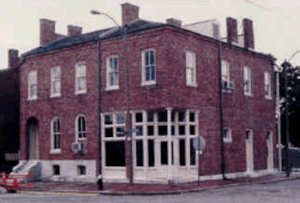
The Rosebud Bar
This date celebrates the opening of the Rosebud Bar in St. Louis, MO, in 1900. It was one of the original venues for Ragtime music.
It was billed as the "Headquarters for Colored Professionals and Sports" and located at 2220-2222 Market Street, in the heart of St. Louis's "Chestnut Valley," an early 20th-century red-light district. Black Businessman and musician Tom Turpin opened the Rosebud, “the spot” for classic ragtime. The Rosebud was a sprawling entertainment complex, taking up much of a city block. There were two barrooms, a large room for gambling, and a hotel upstairs.
A wine room in the back was centered on the raised piano from which Turpin often played. One room was designated "The Hunting and Shooting Club" for those who liked outdoor and indoor sports. Turpin transformed a small shack into the Hurrah Sporting Club in an alley about a block away as an annex to the Rosebud. The Hurrah membership had a piano but no bar. All sorts of enjoyments were to be had in Chestnut Valley, and the Valley's center was the Rosebud Bar. Tom Turpin, being a good businessman, knew the value of advertising. During this period, the "Palladium," the top Black newspaper in St. Louis, often carried ads for the Rosebud, extolling its "first-class cafe," poolroom, and private dining areas.
Turpin also used special events to get feature stories in the newspaper. The annual Rosebud Ball, the house-label Applegate's Old Rosebud Whiskey, and the 1904 holiday party with the "electric Christmas tree" and presents for everyone who attended all were newsworthy and good for business. However, the attraction to the Rosebud was its piano music. No other place in the district could boast such an array of players. Turpin played there regularly; he was a hero to the dozens of Black rag players who plied their trade all over the Midwest. The Rosebud drew them like a magnet. It became their hangout, workplace, and clearinghouse for jobs in St. Louis and those all over eastern and central Missouri.
This establishment nurtured and showcased most first-generation geniuses, lesser players, and writers of this new American music for the first ten years of the ragtime era. For virtually all of them, their years in St. Louis would be their most productive, and, with the Rosebud as their stage, they defined the form and style of classic ragtime, most notably Scott Joplin. The ragtime that flowered in and around the Rosebud set the standard. It was simply the best being created anywhere. The Rosebud closed in 1906, only two years after the height of ragtime at the Louisiana Purchase Exposition in 1904.
Many formidable players had left St. Louis for Chicago and New York. Still, ragtime's history points to St. Louis, specifically the Rosebud Bar, as the center of ragtime.
The Great St. Louis.wordpress.com
The Black Book
By Middleton Harris with assistance from:
Morris Levitt, Roger Furman, and Ernest Smith
Copyright 1974, Random House, New York
ISBN 0-394-48388-X